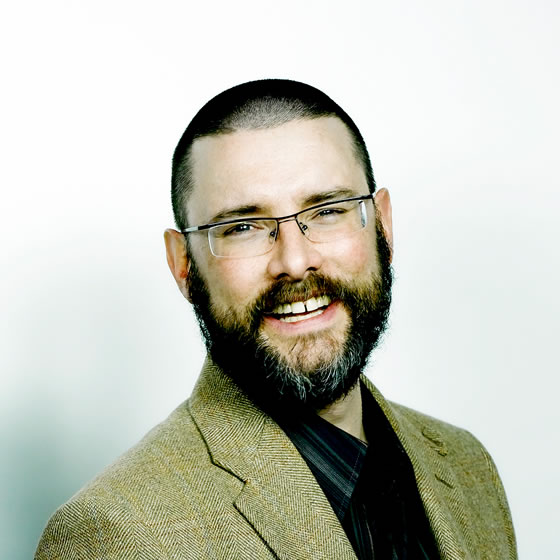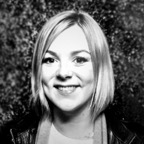Designing Your Future
I’ve had the pleasure of working for a variety of clients – both large and small – over the last 25 years. In addition to my work as a design consultant, I’ve worked as an educator, leading the Interaction Design team at Belfast School of Art, for the last 15 years.
In July, 2018 – frustrated with formal education, not least the ever-present hand of ‘austerity’ that has ravaged universities in the UK for almost a decade – I formally reduced my teaching commitment, moving from a full-time role to a half-time role.
Making the move from a (healthy!) monthly salary towards a position as a freelance consultant is not without its challenges: one month your salary’s arriving in your bank account (and promptly disappearing to pay all of your bills); the next month, that salary’s been drastically reduced. That can be a shock to the system.
In this article, I’ll explore the challenges encountered when taking a life-changing leap of faith. To help you confront ‘the fear’ – the nervousness, the sleepless nights and the ever-present worry about paying the bills – I’ll provide a set of tools that will enable you to take a leap of faith and pursue what deep down drives you.
In short: I’ll bare my soul and share everything I’m currently working on to – once and for all – make a final bid for freedom.
This isn’t easy. I’m sharing my innermost hopes and aspirations, and I might open myself up to ridicule, but I believe that by doing so, I might help others, by providing them with tools to help them make their own leap of faith.
The power of visualisation
As designers we have skills that we use day in, day out to imagine future possibilities, which we then give form. In our day-to-day work, we use those abilities to design products and services, but I also believe we can use those skills to design something every bit as important: ourselves.
In this article I’ll explore three tools that you can use to design your future:
Each of these tools is designed to help you visualise your future. By giving that future form, and providing a concrete goal to aim for, you put the pieces in place to make that future a reality.
Brian Eno – the noted musician, producer and thinker – states, “Humans are capable of a unique trick: creating realities by first imagining them, by experiencing them in their minds.” Eno helpfully provides a powerful example:
When Martin Luther King said, “I have a dream,” he was inviting others to dream that dream with him. Once a dream becomes shared in that way, current reality gets measured against it and then modified towards it.
The dream becomes an invisible force which pulls us forward. By this process it starts to come true. The act of imagining something makes it real.
When you imagine your future – designing an alternate, imagined reality in your mind – you begin the process of making that future real.
Product DNA
The first tool, which I use regularly – for myself and for client work – is a tool called Product DNA. The intention of this tool is to identify beacons from which you can learn, helping you to visualise your future.
We all have heroes – individuals or organisations – that we look up to. Ask yourself, “Who are your heroes?” If you had to pick three, who would they be and what could you learn from them? (You probably have more than three, but distilling down to three is an exercise in itself.)
Earlier this year, when I was putting the pieces in place for a change in career direction, I started with my heroes. I chose three individuals that inspired me:
- Alan Moore: the author of ‘Do Design: Why Beauty is Key to Everything’;
- Mark Shayler: the founder of Ape, a strategic consultancy; and
- Seth Godin: a writer and educator I’ve admired and followed for many years.
Looking at each of these individuals, I ‘borrowed’ a little DNA from each of them. That DNA helped me to paint a picture of the kind of work I wanted to do and the direction I wanted to travel.
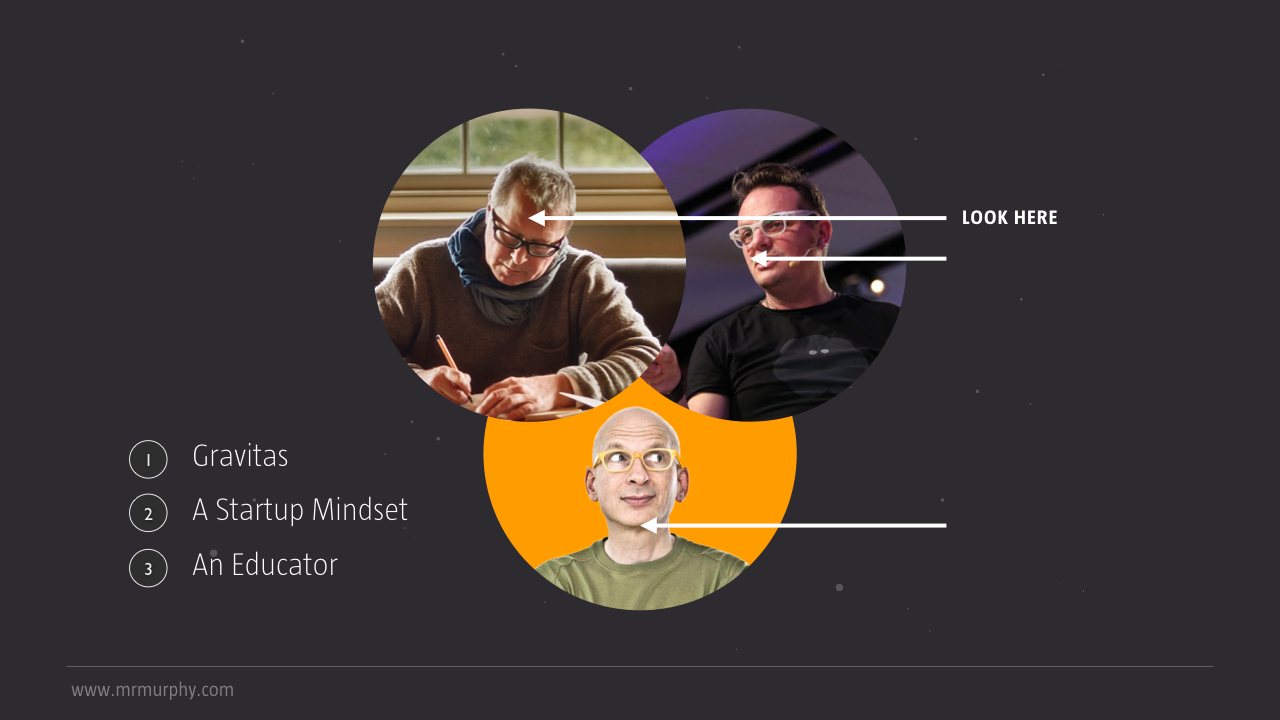
Moore’s book - ‘Do Design’ – had a powerful influence on me, but the primary inspiration I drew from him was the sense of gravitas he conveyed in his work. Moore’s mission is an important one and he conveys that with an appropriate weight of expression.
Shayler’s work appealed to me for its focus on equipping big businesses with a startup mindset. As he puts it: “I believe that you can do the things that you do better.” That sense – of helping others to be their best selves – appealed to me.
Finally, the words Godin uses to describe himself – “An Author, Entrepreneur and Most of All, a Teacher” – resonated with me. The way he positions himself, as, “most of all, a teacher,” gave me the belief I needed that I could work as an educator, but beyond the ivory tower of academia.
I’ve been exploring each of these individuals in depth, learning from them and applying what I learn to my practice. They don’t all know it, but they are all ‘mentors from afar’.
In a moment of serendipity – and largely, I believe, because I’d used this tool to explore his work – I was recently invited by Alan Moore to help him develop a leadership programme built around his book.
The key lesson here is that not only has this exercise helped me to design my future and give it tangible form, it’s also led to a fantastic opportunity to work with Alan Moore, a thinker who I respect greatly.
Artefacts From the Future
The second tool, which I also use regularly, is a tool called ‘Artefacts From the Future’. These artefacts – especially when designed as ‘finished’ pieces – are useful for creating provocations to help you see the future more clearly.
‘Artefacts From the Future’ can take many forms: they might be imagined magazine articles, news items, or other manifestations of success. By imagining these end points and giving them form, you clarify your goals, establishing something concrete to aim for.
Earlier this year I revisited this tool to create a provocation for myself. I’d just finished Alla Kholmatova’s excellent book on ‘Design Systems’, which I would recommend highly. The book wasn’t just filled with valuable insights, it was also beautifully designed.
Once I’d finished reading Kholmatova’s book, I started thinking: “Perhaps it’s time for me to write a new book?” Using the magic of ‘Inspect Element’, I created a fictitious page for a new book I wanted to write: ‘Designing Delightful Experiences’.
I wrote a description for the book, considering how I’d pitch it.
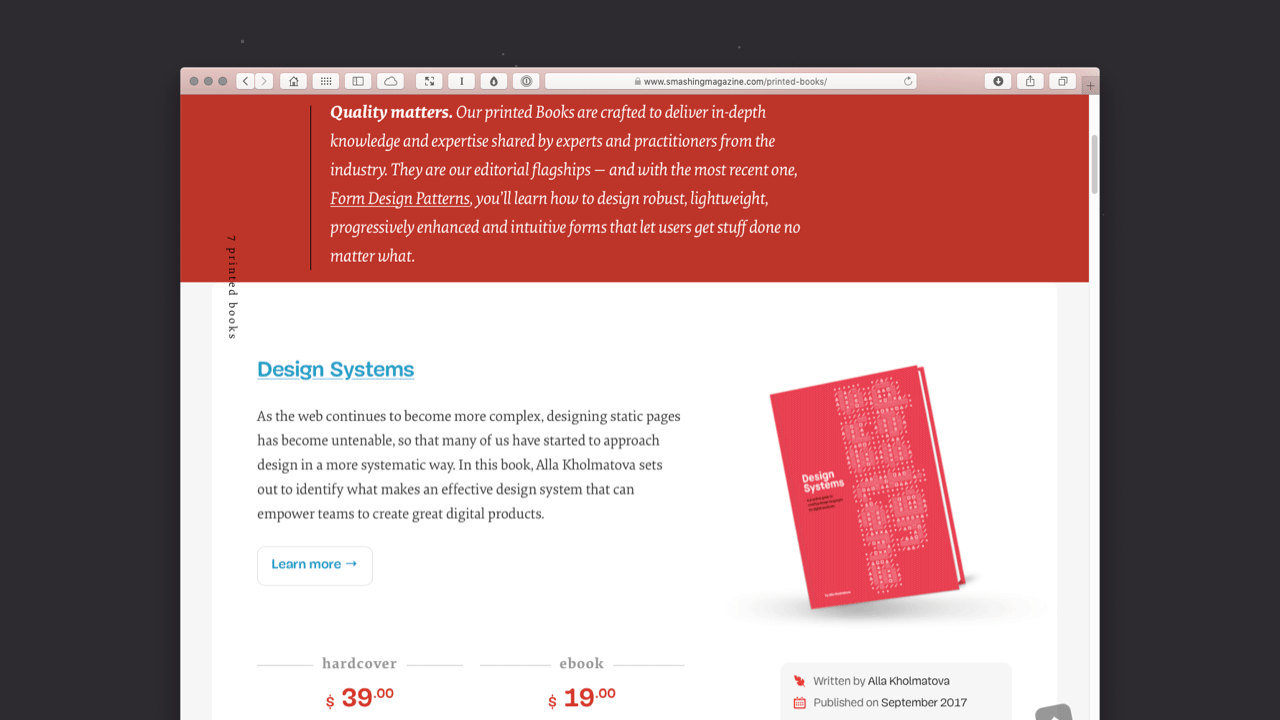
This imagined page was just what I needed to paint a picture in my mind of a possible new book. I contacted the team at Smashing Magazine and pitched the idea to them. I’m happy to say that I’m now working on that book, which is due to be published in 2019.
Without this fictional promotional page from the future, the book would have remained as an idea – loosely defined – rolling around my mind. By spending some time, turning that idea into something ‘real’, I had everything I needed to tell the story of the book, sharing it with the publishing team at Smashing Magazine.
Of course, they could have politely informed me that they weren’t interested, but I’d have lost nothing – truly – in the process.
As designers, creating these imaginary ‘Artefacts From the Future’ is firmly within our grasp. All we need to do is let go a little and allow our imaginations to wander.
In my experience, working with clients and – to a lesser extent, students – it’s the ‘letting go’ part that’s the hard part. It can be difficult to let down your guard and share a weighty goal, but I’d encourage you to do so. At the end of the day, you have nothing to lose.
The key lesson here is that your ‘Artefacts From the Future’ will focus your mind. They’ll transform your unformed ideas into ‘tangible evidence’ of future possibilities, which you can use as discussion points and provocations, helping you to shape your future reality.
Tomorrow Clients
The third tool, which I developed more recently, is a tool called ‘Tomorrow Clients’. This tool is designed to help you identify a list of clients that you aspire to work with.
The goal is to pinpoint who you would like to work with – in an ideal world – and define how you’d position yourself to win them over. Again, this involves ‘letting go’ and allowing your mind to imagine the possibilities, asking, “What if…?”
Before I embarked upon the design of my new website, I put together a ‘soul searching’ document that acted as a focal point for my thinking. I contacted a number of designers for a second opinion to see if my thinking was sound.
One of my graduates – Chris Armstrong, the founder of Niice – replied with the following: “Might it be useful to consider five to ten companies you’d love to work for, and consider how you’d pitch yourself to them?”
This was just the provocation I needed. To add a little focus, I reduced the list to three, asking: “Who would my top three clients be?”
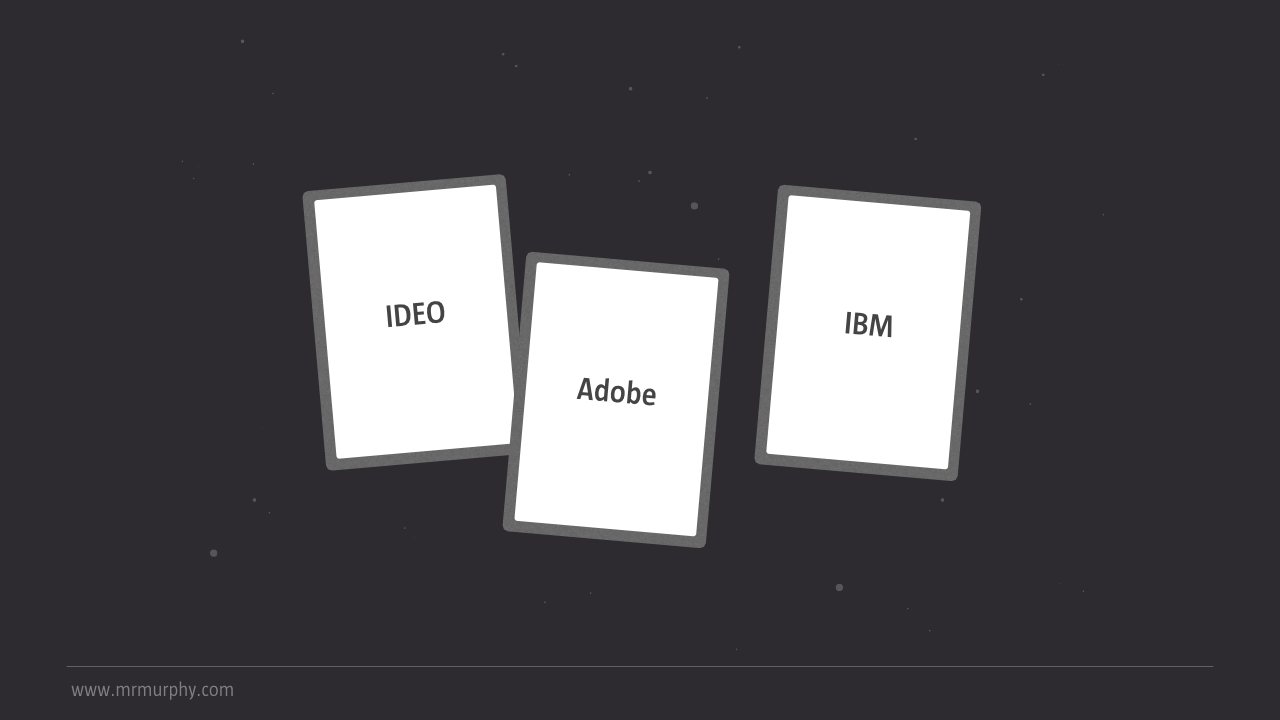
By distilling the list down I focused on who I’d like to work for and how I’d position myself to entice them to work with me. My list included: IDEO, Adobe and IBM. All are companies I admire and I believed each would be interesting to work for.
This exercise might – on the surface – appear a little like indulging in fantasy, but I believe it helps you to clarify exactly what it is you are good at and, just as importantly, put that in to words.
For each company, I wrote a short pitch outlining why I admired them and what I thought I could add to their already existing skillset.
Focusing first on Adobe, I suggested establishing an emphasis on educational resources, designed to help those using Adobe’s creative tools to get the most out of them.
A few weeks ago, I signed a contract with the team working on Adobe XD to create a series of ‘capsule courses’, focused on UX design. The first of these courses – exploring UI design – will be out in 2019.
I believe that Armstrong’s provocation – asking me to shift my focus from clients I have worked for in the past to clients I aspire to work for in the future – made all the difference.
The key lesson here is that this exercise encouraged me to raise the bar and look to the future, not the past. In short, it enabled me to proactively design my future.
In closing…
I hope these three tools will prove a welcome addition to your toolset. I use them when working with clients, I also use them when working with myself.
I passionately believe that you can design your future. I also firmly believe that you’re more likely to make that future a reality if you put some thought into defining what it looks like.
As I say to my students and the clients I work with: It’s not enough to want to be a success, the word ‘success’ is too vague to be a destination. A far better approach is to define exactly what success looks like.
The secret is to visualise your future in as much detail as possible. With that future vision in hand as a map, you give yourself something tangible to translate into a reality.
About the author
A designer, writer and speaker based in Belfast, Christopher works with purpose-driven businesses, helping them to grow and thrive. He encourages small businesses to think big and he enables big businesses to think small.
The author of numerous books, he is currently hard at work on his eighth – ‘Designing Delightful Experiences’ – which focuses on the importance of human-centred design. It will be published by Smashing Media in 2019.
As a design strategist he works with companies, large and small, to help drive innovation, drawing on over 25 years of experience working with global clients including: The BBC, Electronic Arts (EA) and Adobe.
